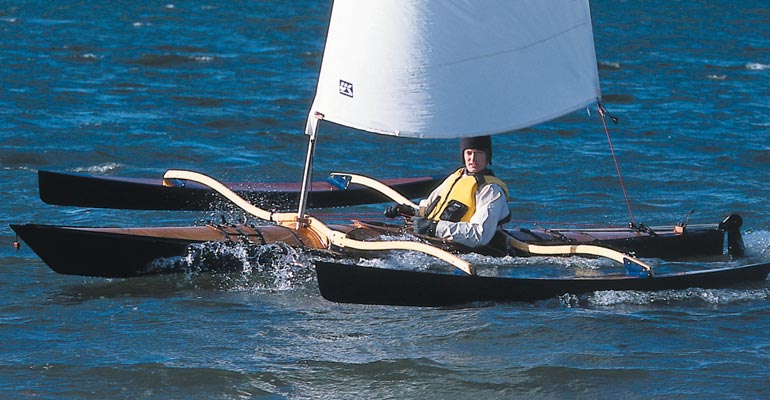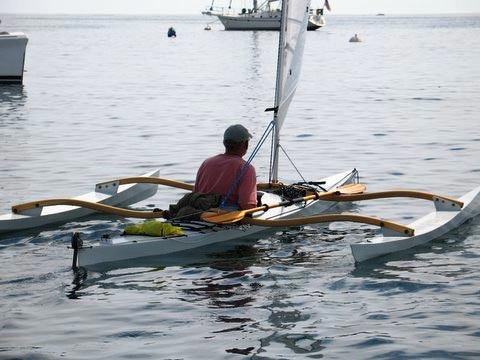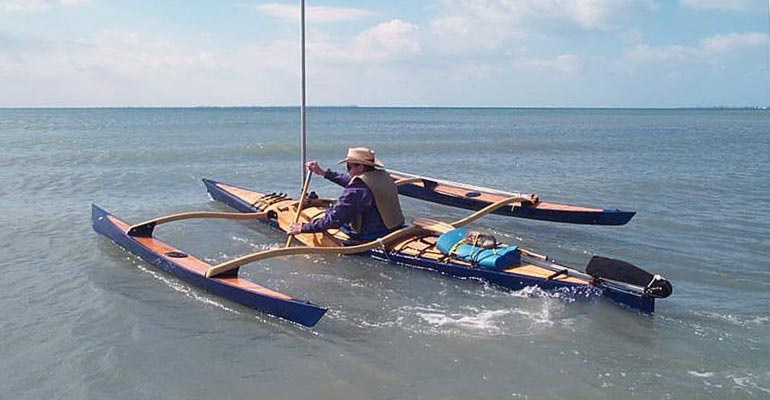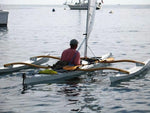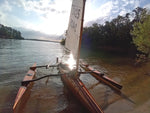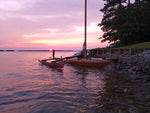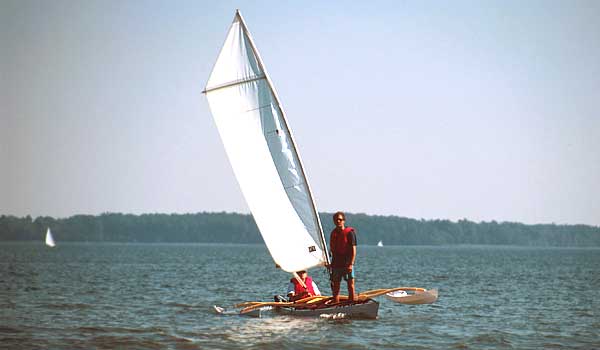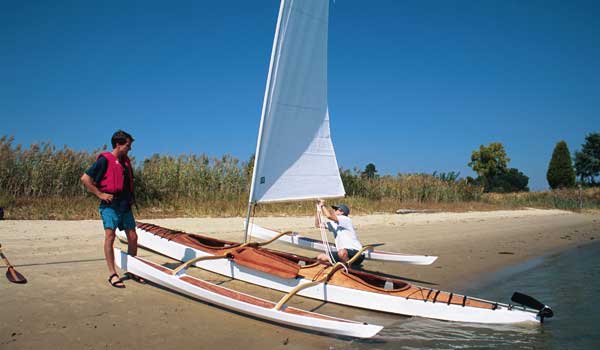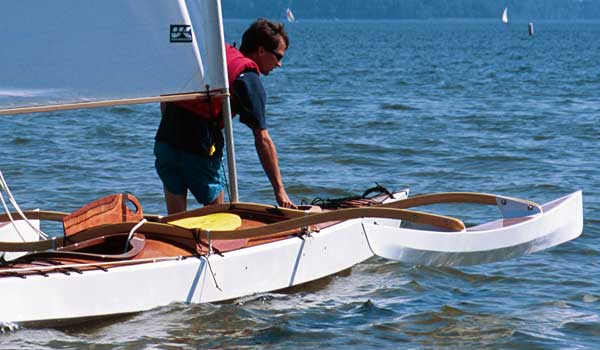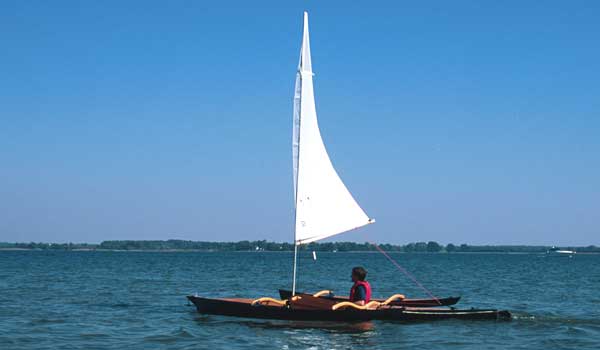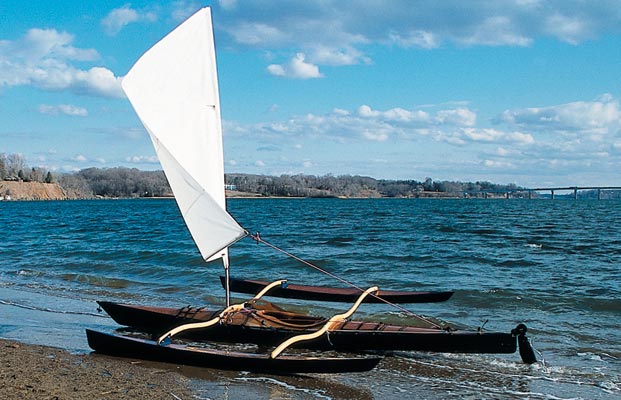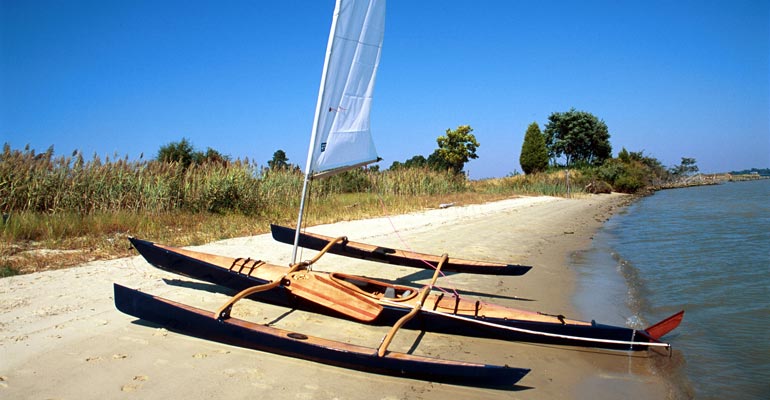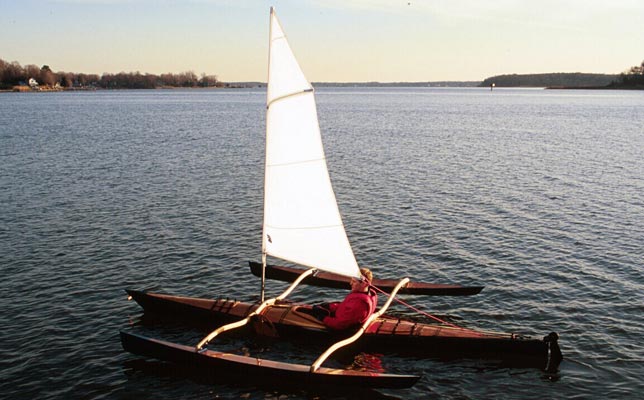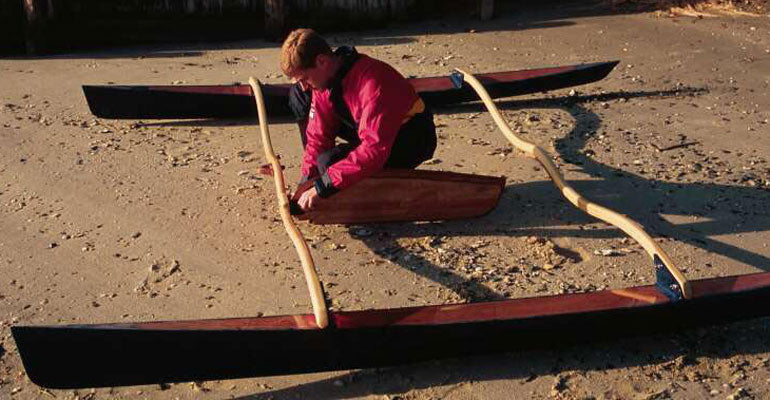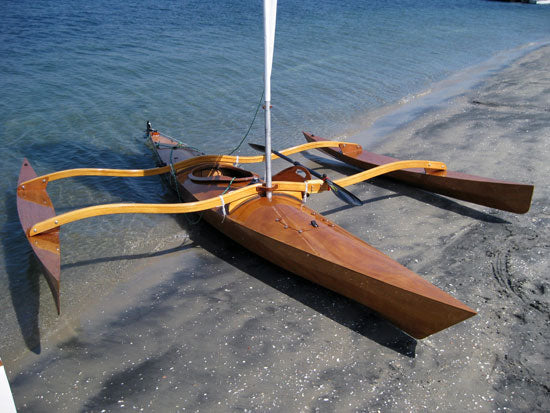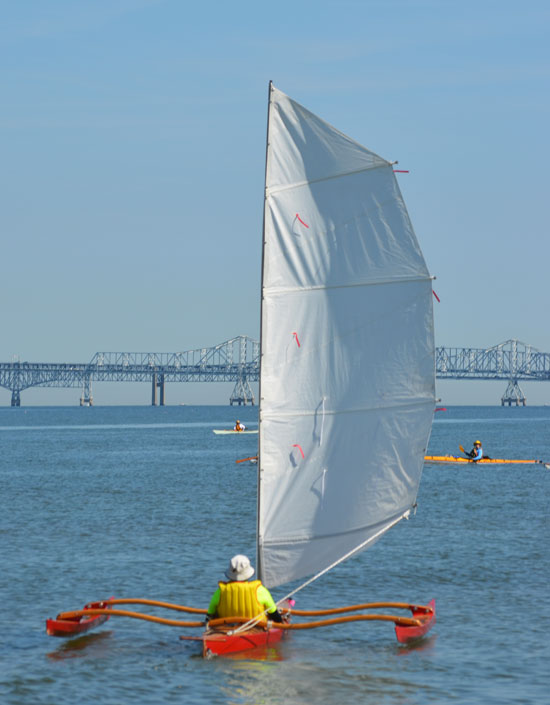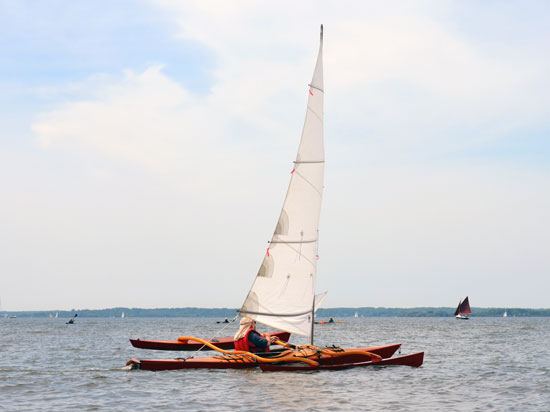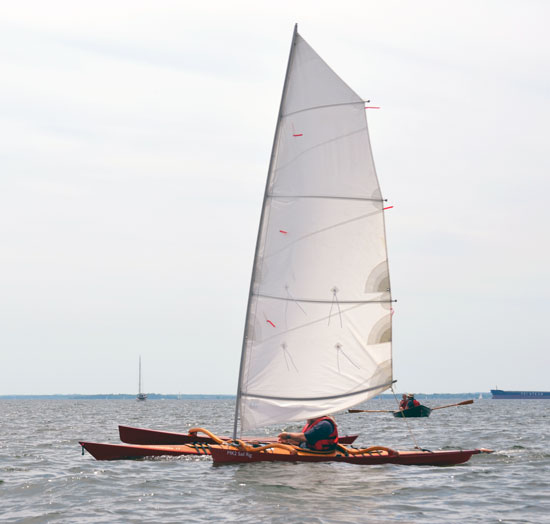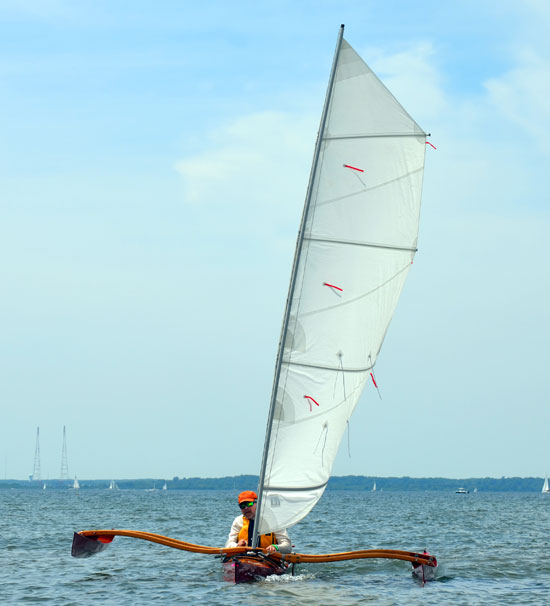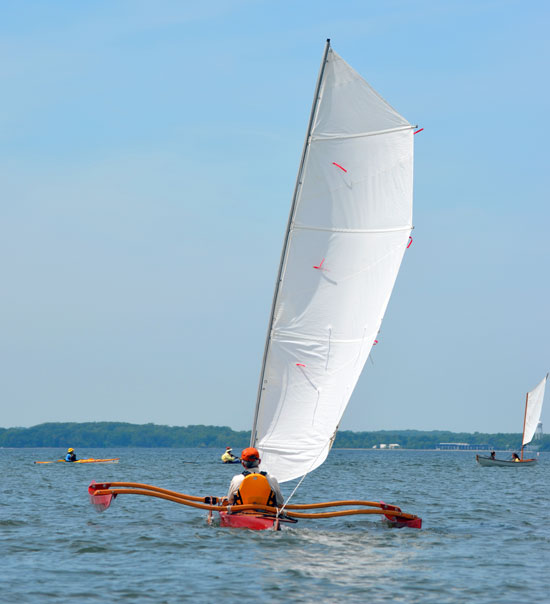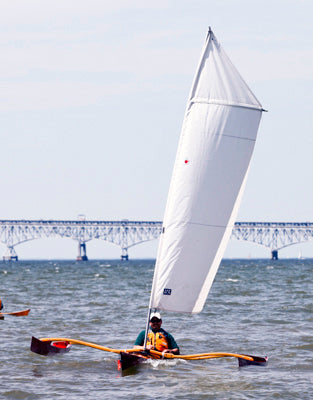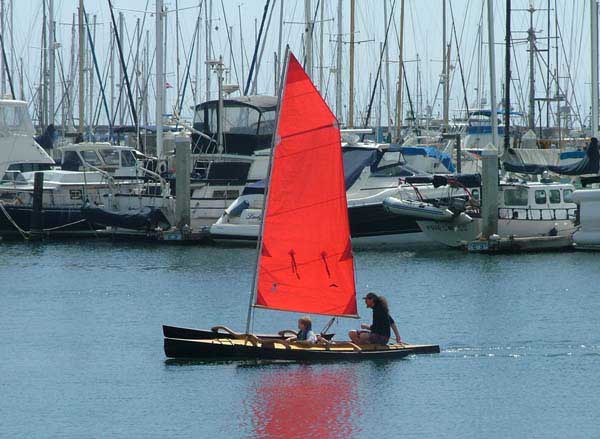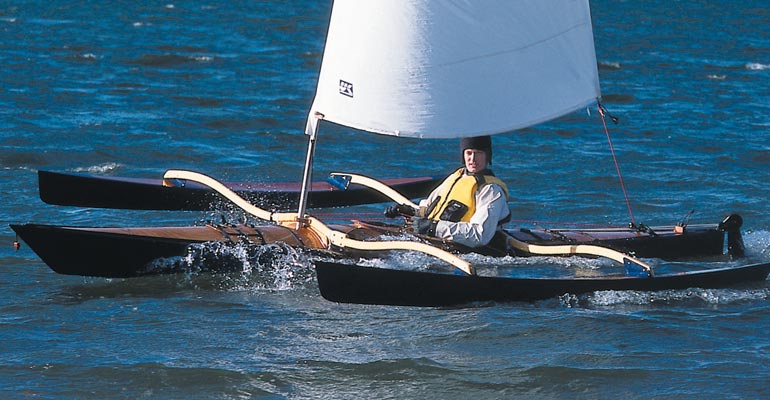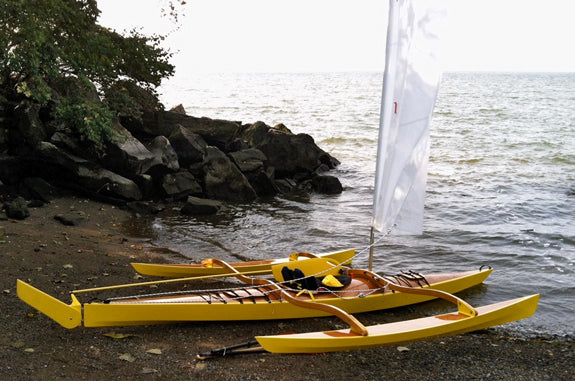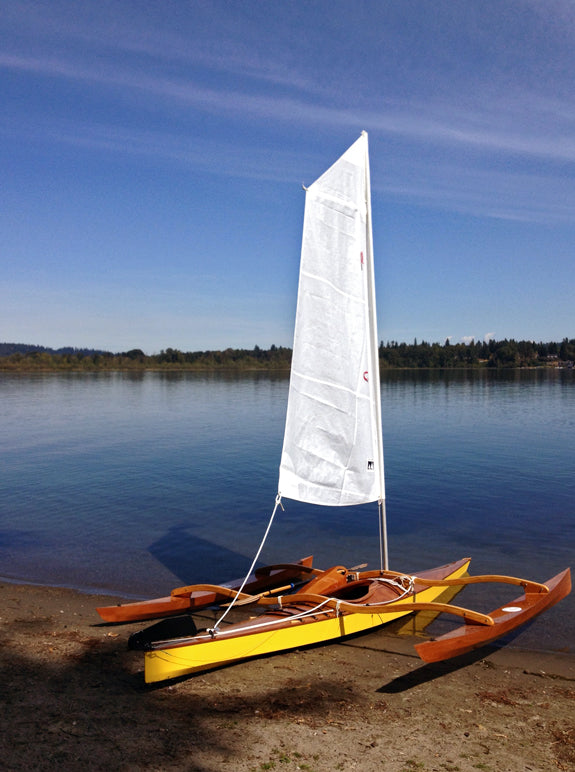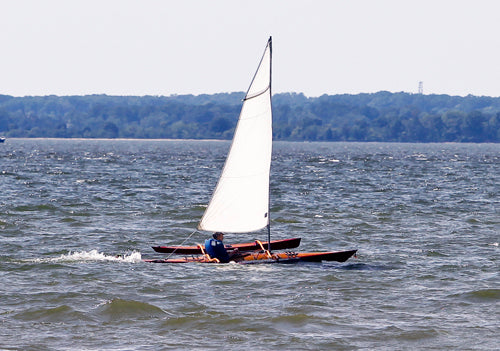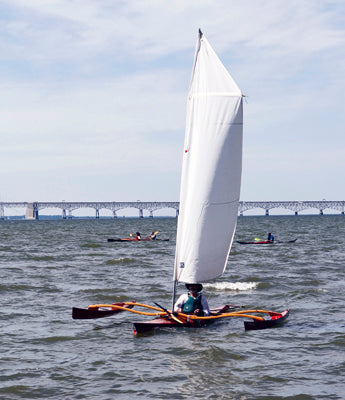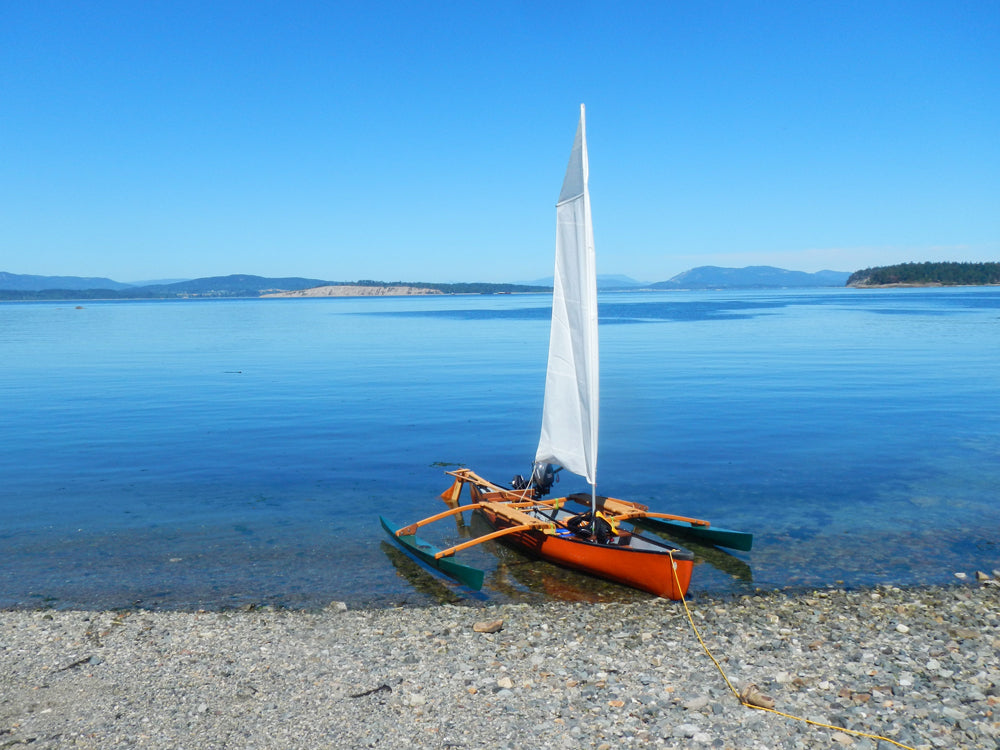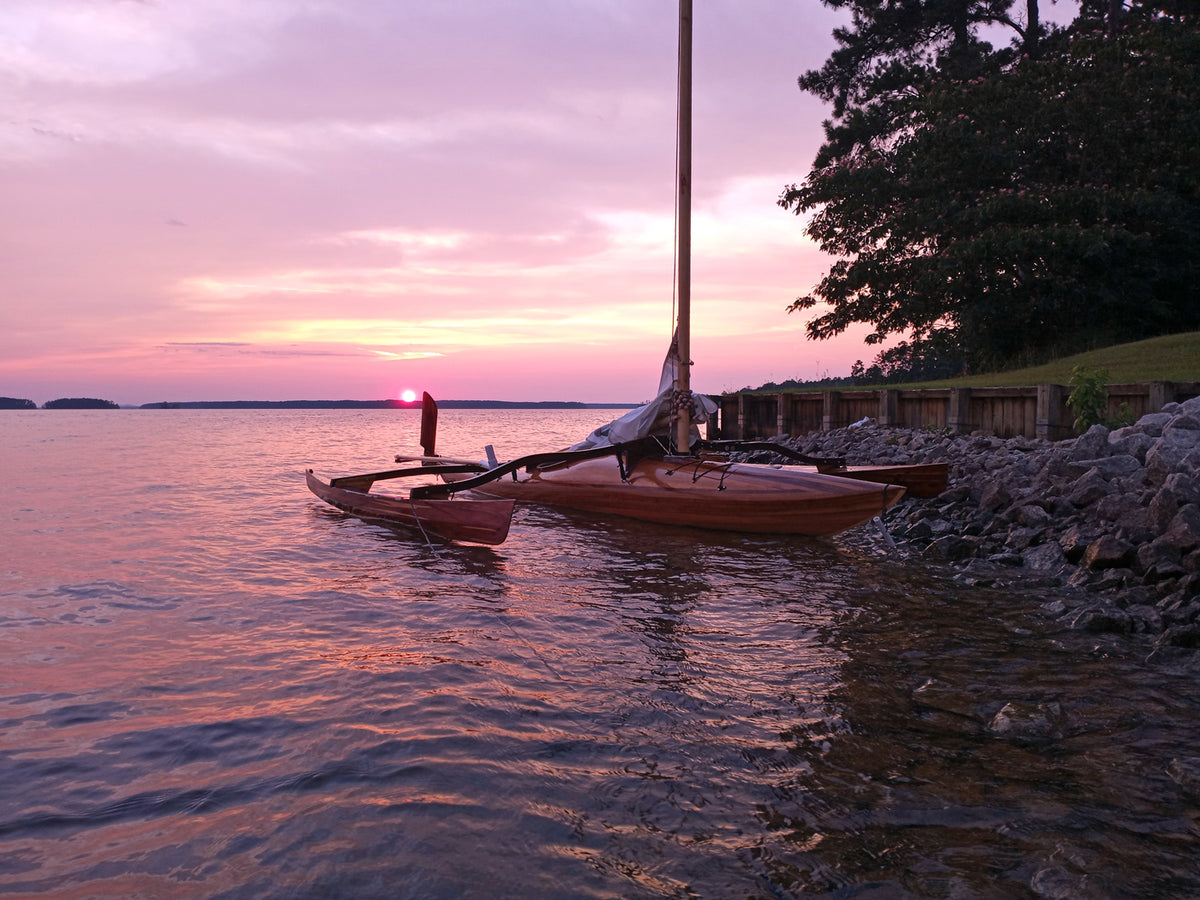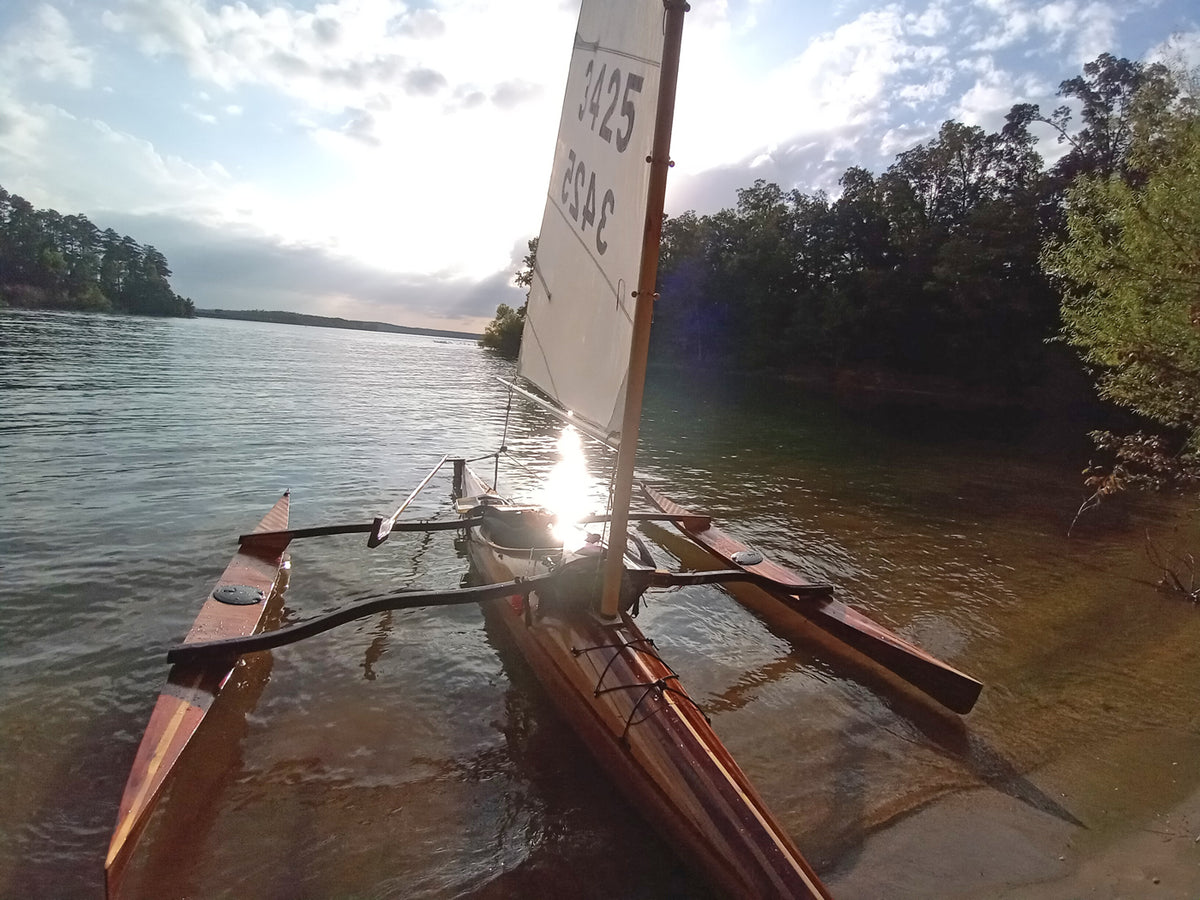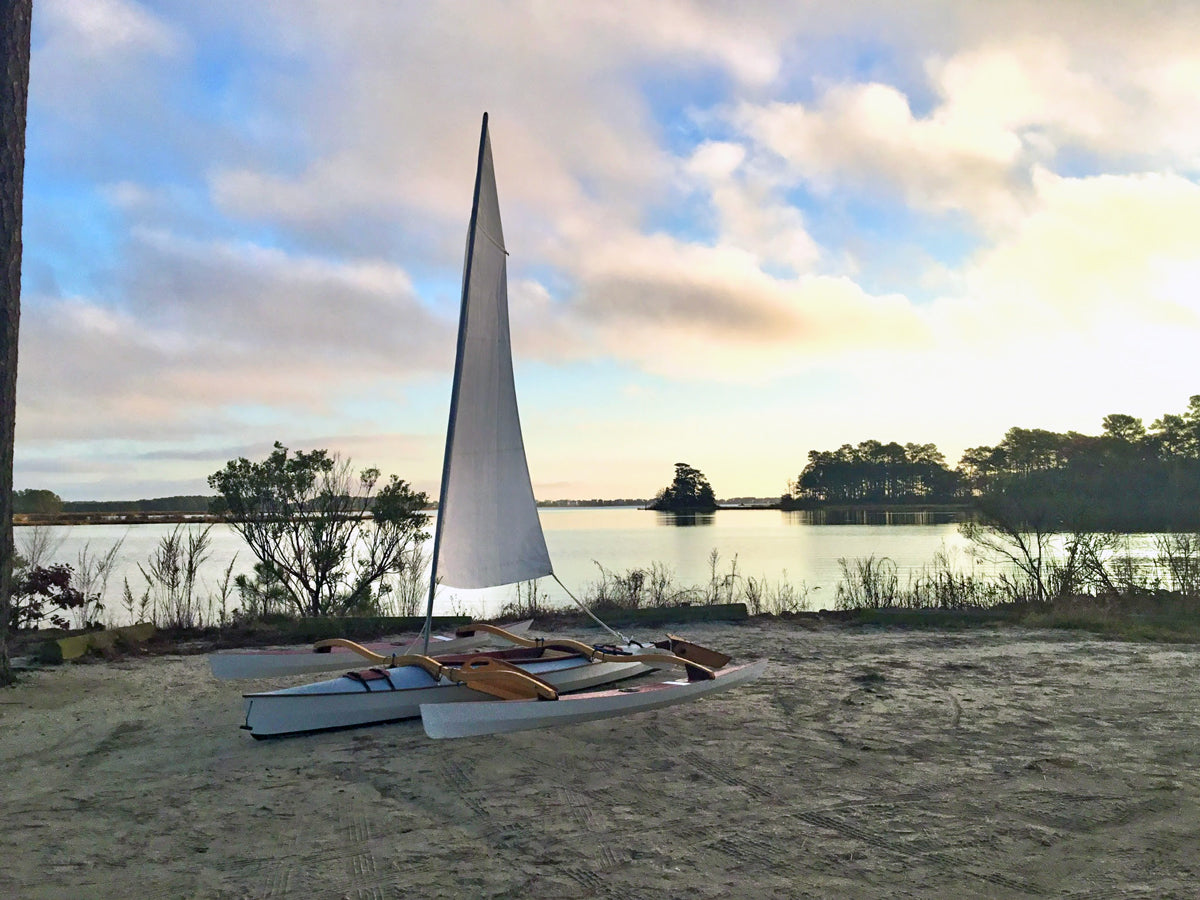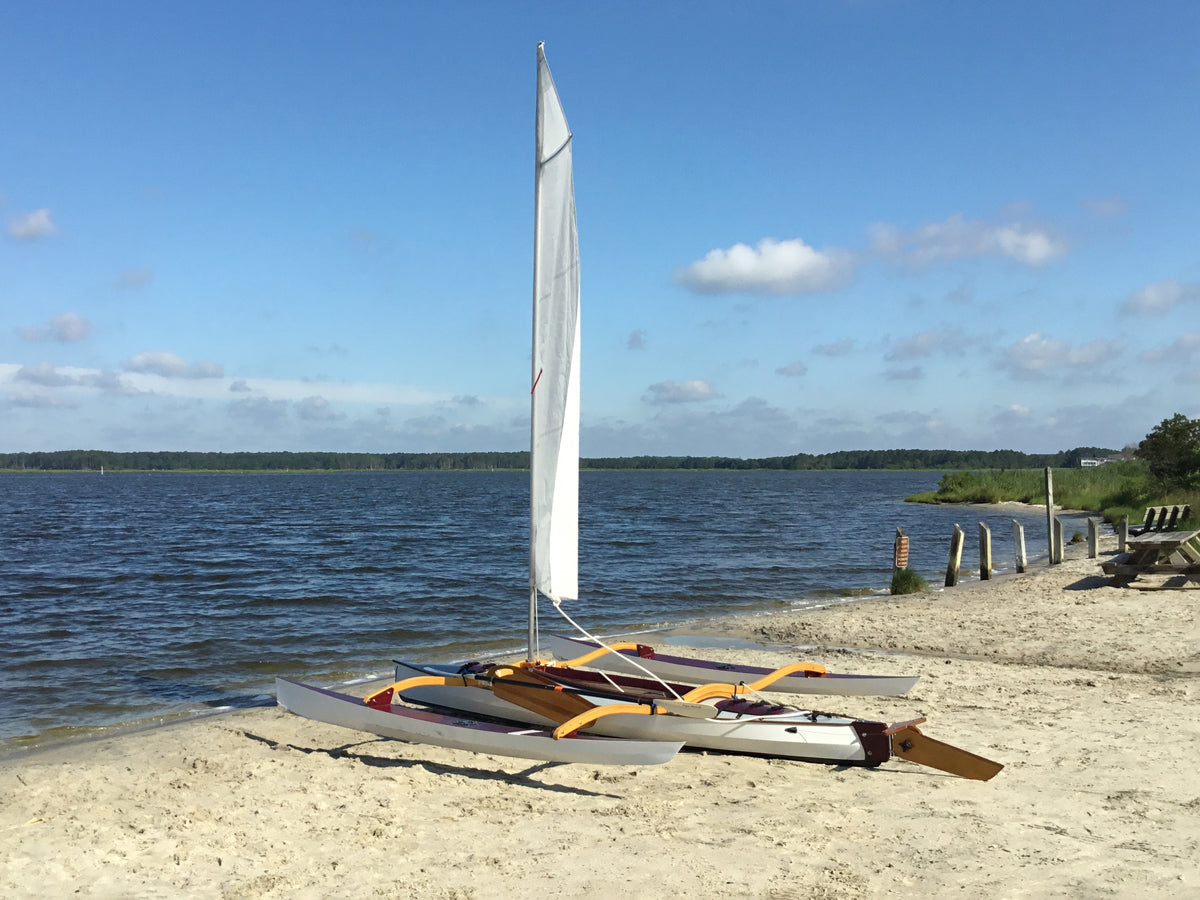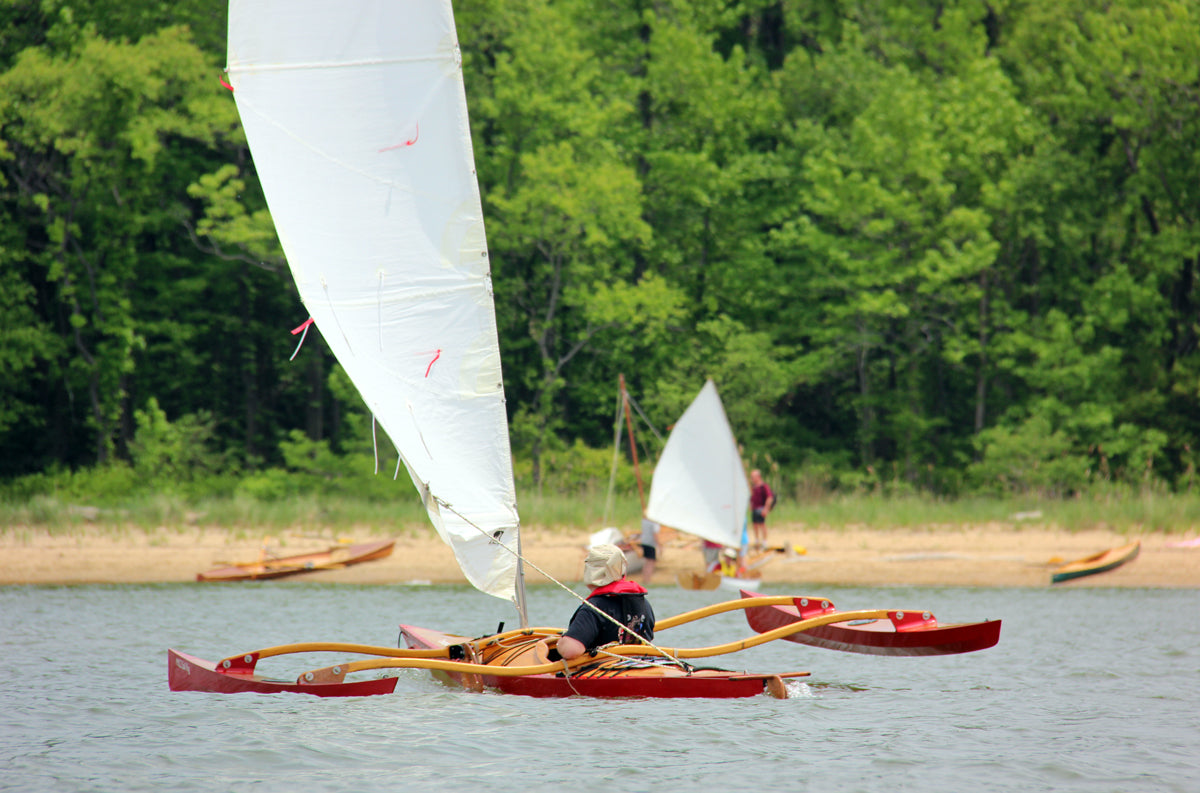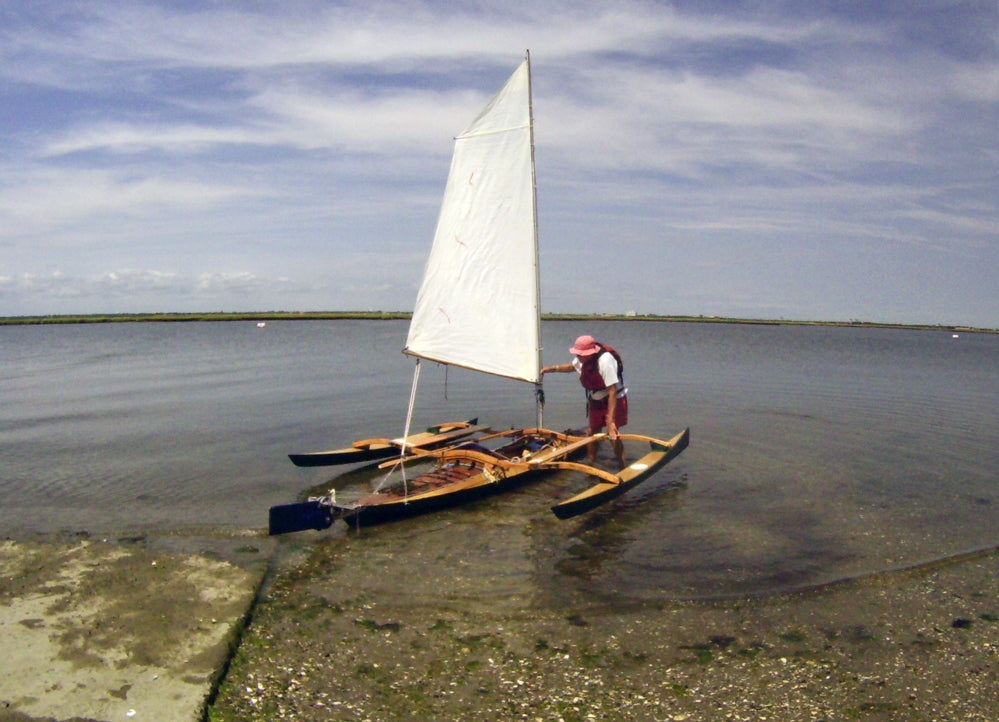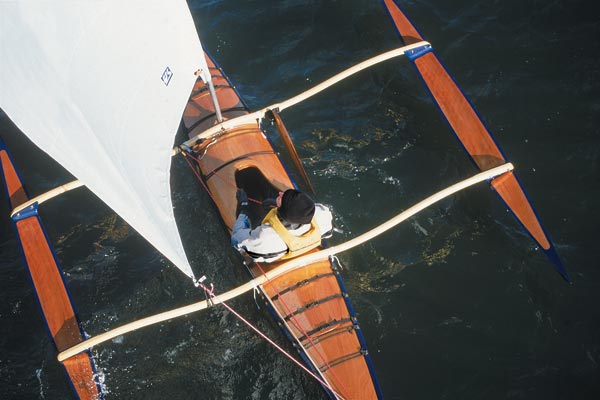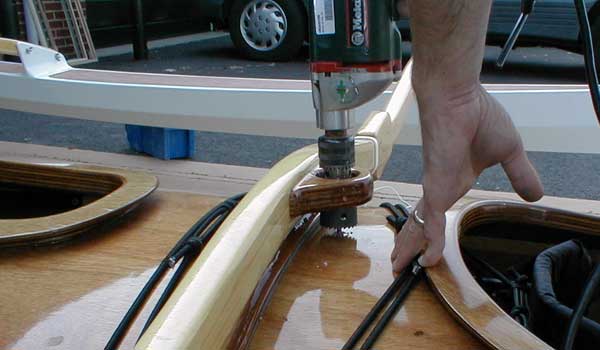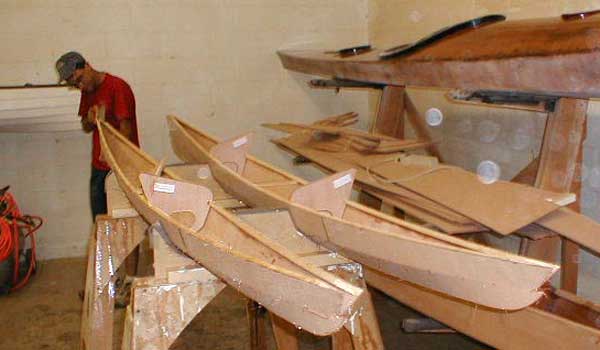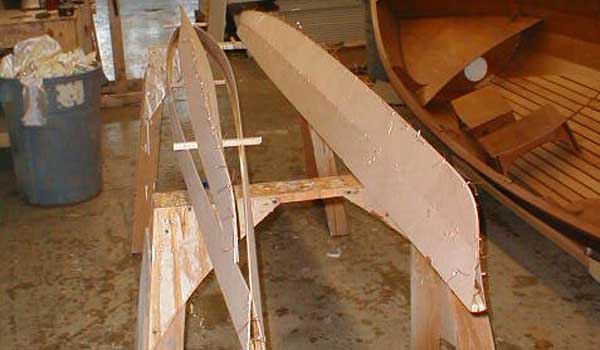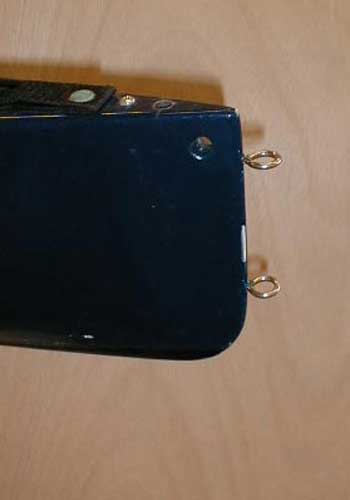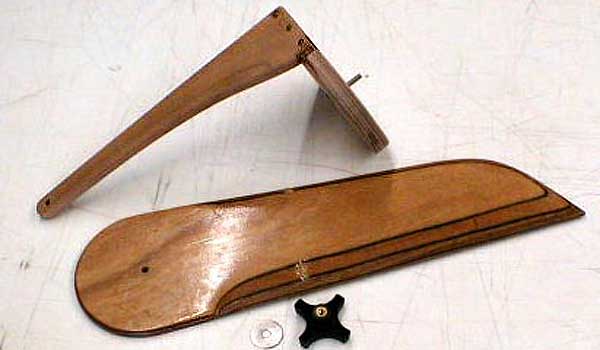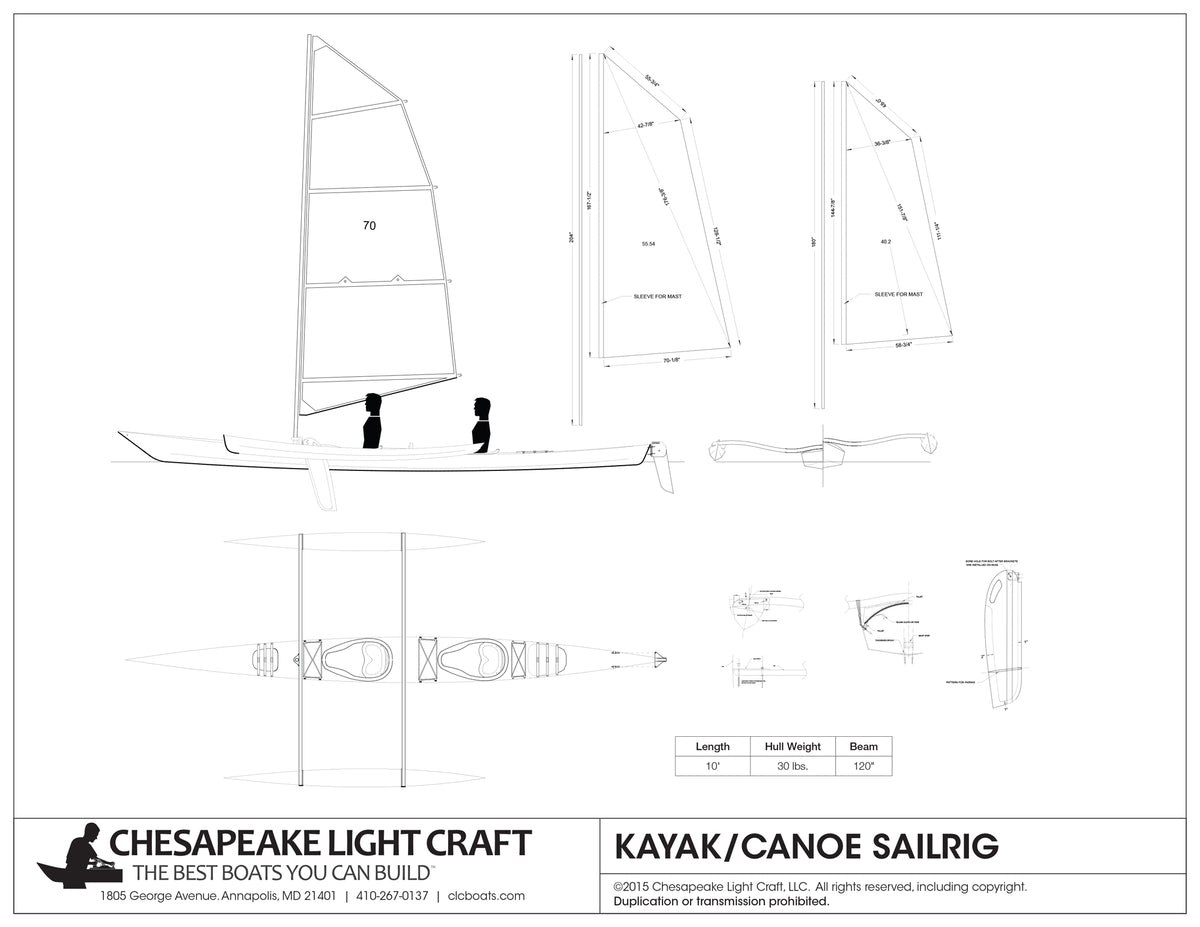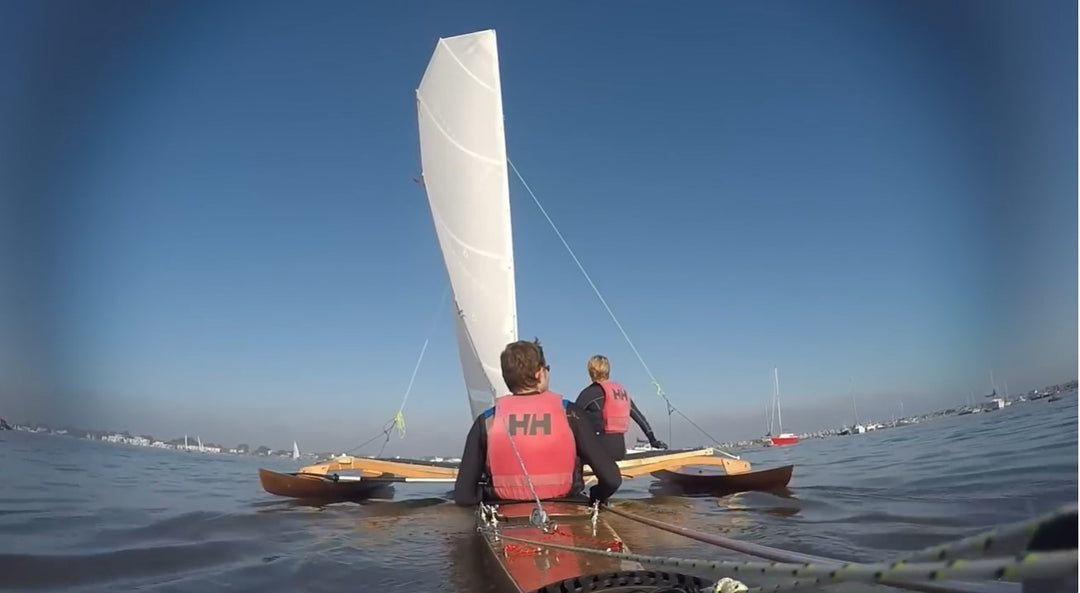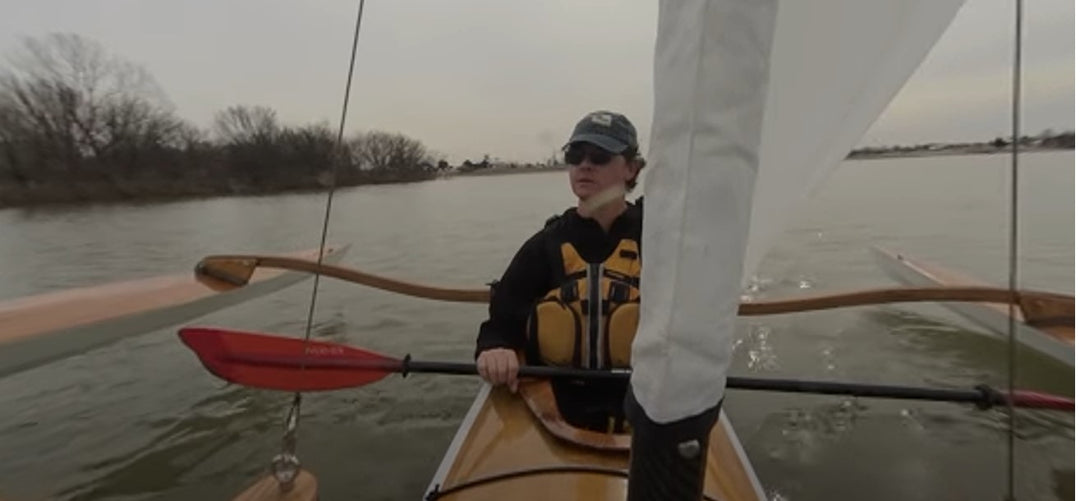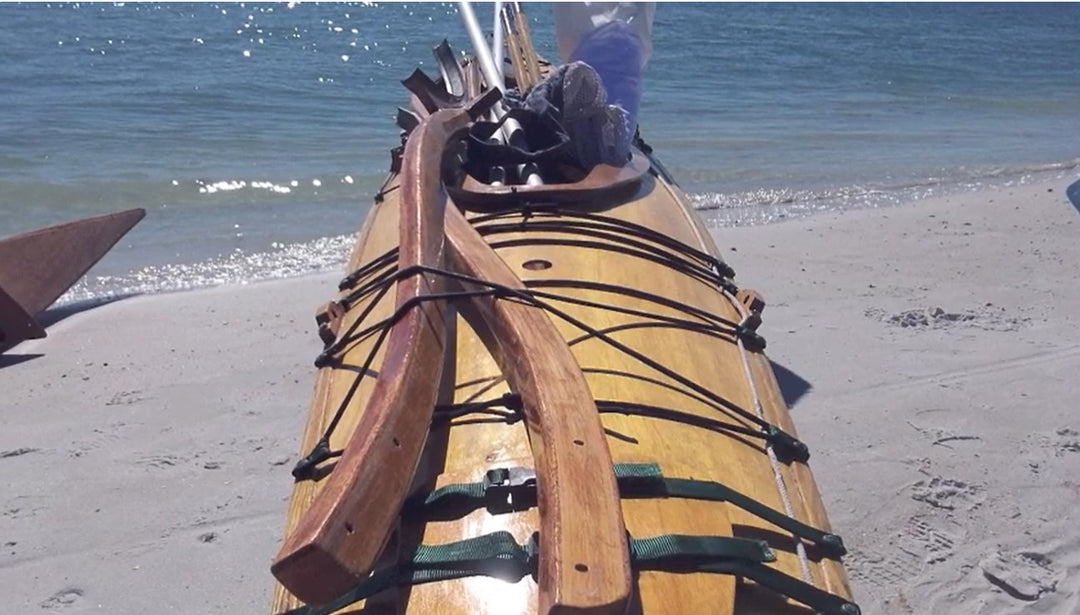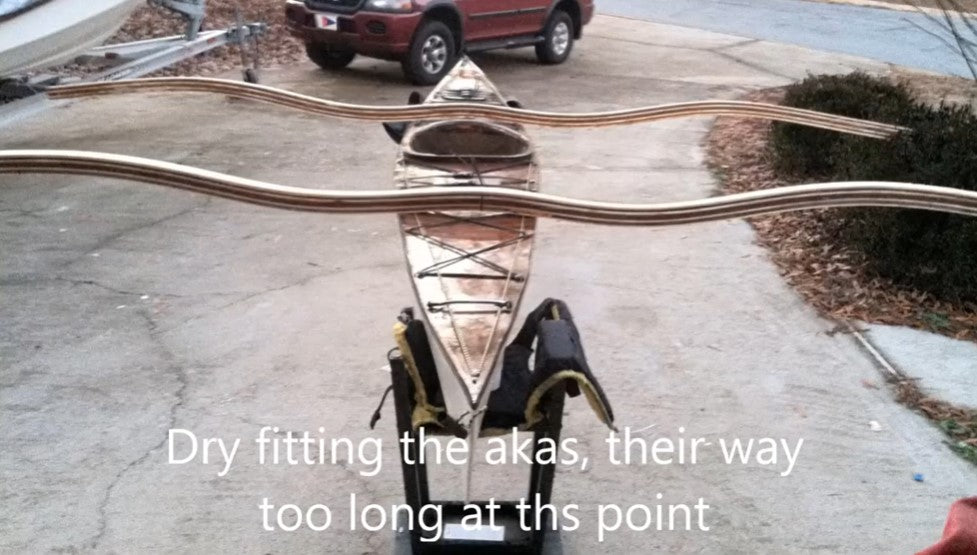Specifications
Performance
Stability
Speed
Payload
Ease of Construction
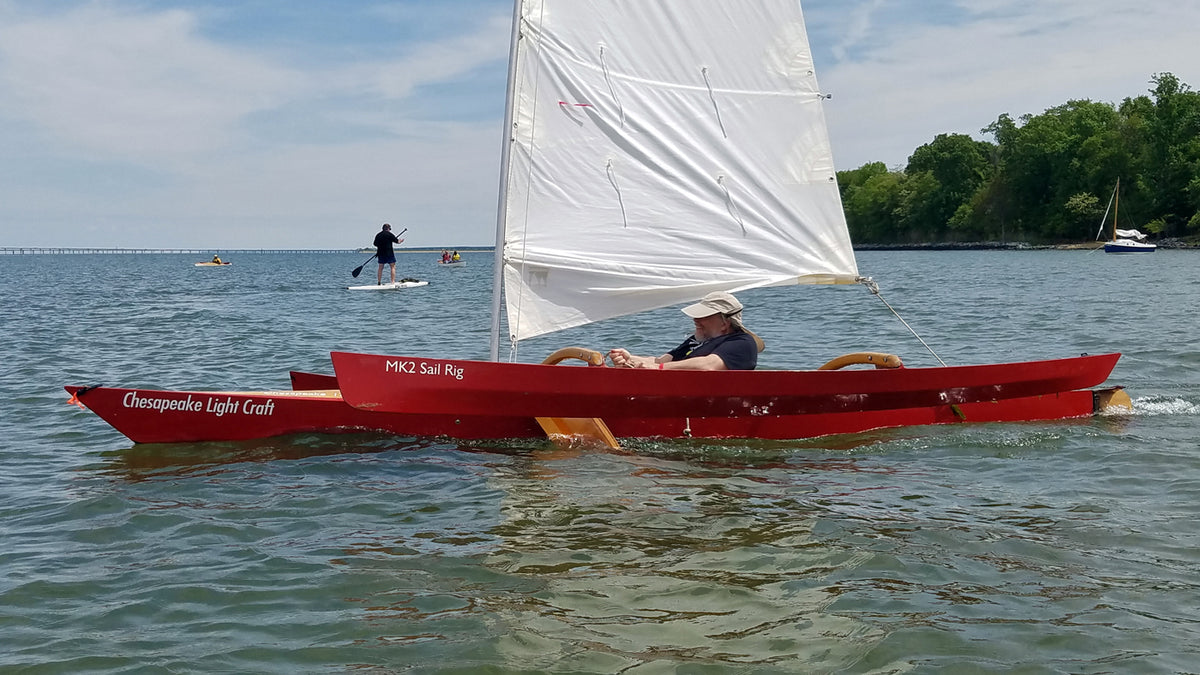
Overview
Kayaks are so easily driven that the urge to equip them for sailing must be as old as kayaks themselves. This neat trimaran-conversion kit, our CLC SailRig, first introduced in 1995, has been built in vast numbers. Read this article to learn about the entire decades-long evolution of the CLC SailRig.
The SailRig is adaptable to almost every kayak and canoe in our catalogue, and almost any production kayak or low-side canoe as well. Mounted on a single kayak, the acceleration is neck-snapping, with good handling both upwind and down, and a potential maximum speed of 9-knots. The 10' beam gives you monolithic stability, which means sail carrying power with no hiking out. The whole rig can be dismantled for cartopping in about 30 minutes. Altogether the components of the CLC SailRig have a total weight of just 30 lbs.
- SailRig 40: A 40-sqft sail is more than enough for fast sailing in solo kayaks and canoes.
- SailRig 55: The 55-sqft sail is a good fit for most double kayaks, or for pushing single kayaks a little harder.
- SailRig 70: Unlike the 40 and 55, the 70-sqft sail requires strategic reinforcement of the host kayak to handle the loads, and a specially equipped mast (including sail track). This option should be reserved for sailors with some skill, and for kayaks with enough bow volume to handle high speeds without "submarining".
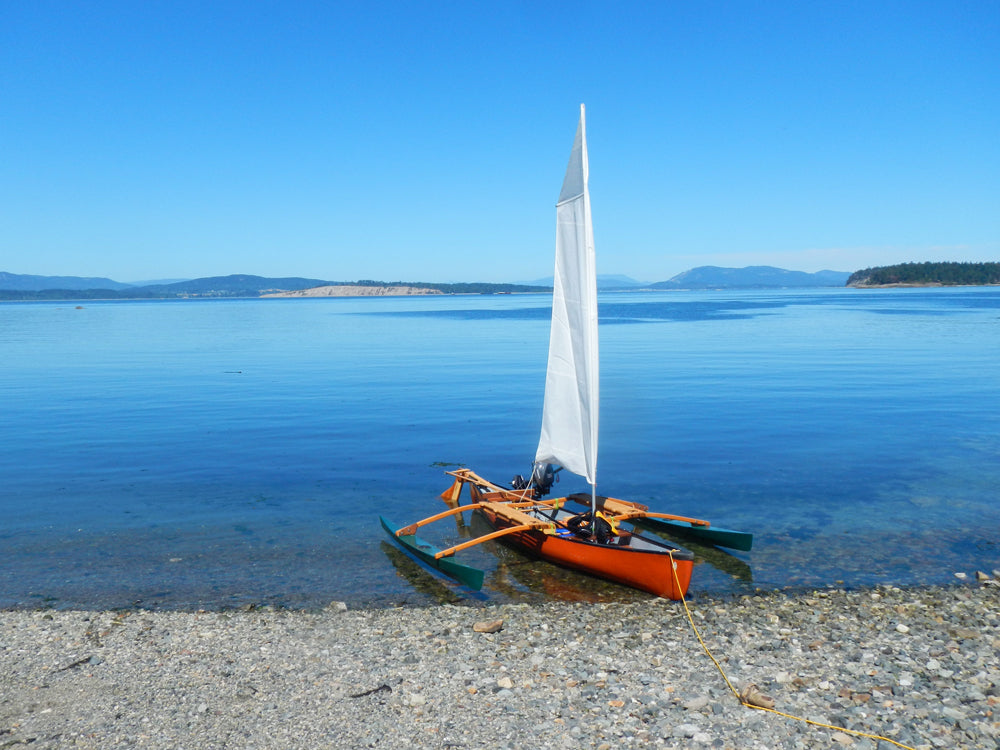
What builders are saying
Main Gallery
Construction Gallery
Line Drawings
Videos
Frequently Asked Questions
We offer classes for many of the boats we sell. Teaching sites stretch from Maryland to Washington State and from Maine to California. Click here to find out more.
View ClassesNeed Help Building it?
We’re here to help with any questions you might have during the build process.

